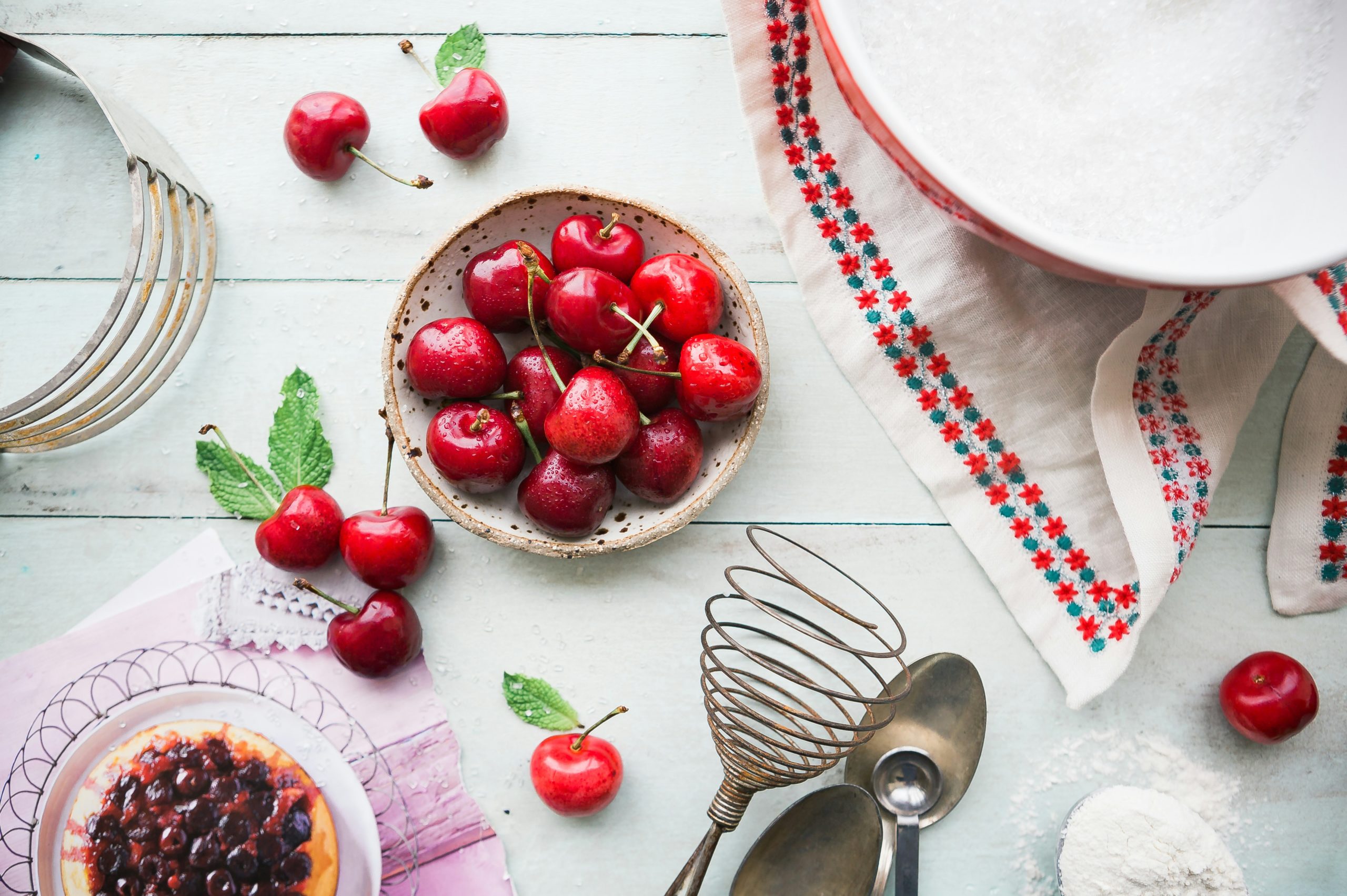Restaurant Gross Profit Margin
Your focus as a restaurateur should be on your gross profit margin percentage. It’s what you have left over after you’ve met all expenses directly related to selling your product (primarily cost of goods and direct labour).
The most surefire way to calculate this percentage and ensure you get everything right is to divide your expenses into two categories: food and beverage costs and wages. Ideally, you’ll spend around 25-30% of your profits on food and beverage costs, but generally no more than 35%. Labour costs should take up around another 30%.
If you keep close to these numbers, you’ll realise a gross profit of about 35% to 40%, which is a good target in the restaurant business. Remember that further expenses (occupancy, marketing, etc.) will come out before you realise your final net profit.
Start With Food Cost
Food cost refers to the menu price of a particular dish compared to the cost of the food used to prepare that dish. In other words, how much you pay for food determines how much you must charge your customers.
As mentioned, food costs should be 25% to 35% in the neighbourhood. In other words, if you pay £1 for something, you should charge a minimum of £2.85.
You may be charging a lot more than necessary, but remember that you aren’t just paying for the food. You’re paying someone to prepare, serve, and clean up afterwards. You also need enough gross profits to pay for the building where your customers are dining and take care of the other costs of keeping your business afloat.
Once you know the costs of those other business expenses, you can zero in on the target gross profit you’ll need to achieve. Armed with that, you can then work to price your menu. Let’s look at a typical menu item: a filet mignon.
Unlock Your Restaurant’s Full Potential Through Gross Profit Margin Analysis
The Basic Equation
Begin by calculating how much preparing that dinner will cost you to serve, including ingredients and staff costs.
The initial cost of the dinner can be broken down into two areas. The beef filet costs you £6 per portion. The wrap—the potato, vegetable, salad, and bread that come with the filet and any condiments—costs £2.50. Therefore, the entire meal costs you £8.50. You might be up to £14.50 when you add in labour costs.
Now subtract this from your proposed menu price and divide the result by the price. Let’s say you’ve chosen a menu price of £25. The equation would look like this:
£25 – £14.50 = £10.50
£10.50 / £25 = 42%
What does this tell you? For one, your £25 price point is in the right ballpark. It’s even a little high. You should thrill your customers and drop the price to £24, letting them think they’re getting a deal. Your gross profit margin on this menu item would still be a perfectly reasonable 39.5%, and the price difference might lure other customers in the door. Psychology matters just as much as the exact numbers do.
Prices Shift as You Make Changes
If you wrapped the filet in bacon and topped it with herb butter, your costs would increase. This change might make that £25 price point more appropriate. Remember, everything on the customer’s plate must be accounted for.
Let’s say this drives your food costs up so that the total cost for this meal is now £15.50. At a menu price of £25, this would have a similar effect to dropping the price to £24 without adding the bacon and herb butter. You’re still at 38%, which is respectable. But your customers might be much happier with this embellished meal, and word of mouth is everything.
Portion Control
Chain restaurants are so successful because they have a firm handle on portion control. The cooks in these restaurants know precisely how much of each ingredient to put in every dish. Shrimp scampi might have a portion control of six shrimp per dish, so every shrimp scampi that goes out of that kitchen will have six shrimp in it—no more, no less.
Everything should be measured out if you’re going to practice portion control in your kitchen. Chicken, beef, and fish should all be weighed, shredded cheese can be stored in portion control cups, and a measuring cup can be used to dish out mashed potatoes.
Another way to practice portion control is to purchase pre-portioned items, such as steaks, burger patties, chicken breasts, and pizza dough. These items might be more expensive, but you’ll save money on labour and food waste.
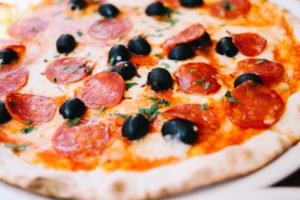
Restaurant Food Pricing Strategies
Restaurant Food Pricing Strategies: A Recipe for Profitability: In the restaurant industry, pricing strategies are the secret ingredients to make or break a business. Given a restaurant’s slender profit margins, a comprehensive understanding of these strategies is pivotal for restaurants. Here are some practical approaches that can steer your establishment toward sustainable success.
Understanding the High-Stakes Game of Pricing: Pricing within the restaurant sphere is an art and a science. It’s not merely about the cost of ingredients and a simple markup. Customer demand, competition, and market trends create a complex recipe for pricing decisions.
Factors Influencing Restaurant Food Pricing
Cost Analysis: Unveiling the Ingredients of Pricing
Understanding the raw costs
- Overheads and operational expenses
- Profit margin aspirations
- Market Research: A Taste of the Competitive Landscape
Analysing competitors’ pricing strategies
- Gauging customer preferences and behaviour
- Adapting to market fluctuations
- Demand Dynamics: Satisfying Customer Palates
Identifying customer expectations
- Catering to seasonal demand variations
- Balancing value and price perception
- Menu Engineering: Crafting a Culinary Symphony
Strategic menu item positioning
- Leveraging psychology in pricing
- Implementing suggestive selling techniques
- Crafting the Perfect Recipe for Pricing Success
- When determining the ideal pricing strategies, a multi-layered approach is imperative.
Strategies for Optimal Restaurant Pricing
Cost-Plus Pricing: Back to Basics
- Adding a percentage markup to the total cost
- A simple approach
- Limited flexibility in highly competitive markets
- Value-Based Pricing: Aligning with Customer Perception
Setting prices based on perceived value
- Focused on customer willingness to pay
- Requires robust market understanding
- Dynamic Pricing: Riding the Wave of Demand
Adjusting prices based on demand fluctuations
- Utilising data and technology for real-time adjustments
- Ideal for managing peak hours and seasonal changes
Bundle and Combo Pricing: The Art of Pairing
- Offering bundled deals for cost-efficiency
- Increasing overall sales by enticing customers
- Effective in promoting specific items or driving volume sales
- Achieving Profitability through Strategic Pricing
The amalgamation of these strategies serves as the cornerstone for a successful restaurant business. A balanced blend of cost efficiency, market intelligence, and customer-centric pricing models ensures sustainability and growth.
Amidst the nuances of pricing strategies, the ultimate goal is to strike the perfect equilibrium between profitability and customer satisfaction. A restaurant can carve its niche and thrive by gauging the market, adapting to evolving trends, and meticulously crafting the menu.
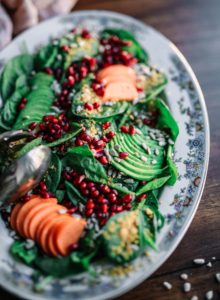
The Cost-Plus Pricing Strategy
The cost-plus pricing strategy is one of the most common menu pricing styles restaurants use. The restaurant owner accounts for all the costs that go into a plate of food, including the fixed costs, such as the wages paid to the cooks and wait staff, the rent, and the utility bills. All of these should be distributed among the various restaurant offerings to its customers. Once the cost of a plate of food is reliably determined, the profit margin is added on top, based on what the restaurant considers a reasonable profit.
Include Everything in Profit
Like any other business, a restaurant business should make a profit to survive. The owner should also be counted in the profit since they need to earn money from the company if it will ultimately be worth keeping open. Other things that should be included are contingency funds for emergency repairs and the like and money to expand the restaurant. All of these should go into determining what the appropriate profit percentage should be over the overheads.
The prevailing market prices and the profit margins of other restaurants should be considered when determining this profit percentage since the restaurant should remain competitive if it will survive.
The percentage profits should then be added to the cost of any item on the menu, meaning every time that item is sold, the sales revenue has paid for the overheads and ensured a healthy profit margin to take care of other things.
Make Considerations for Market Fluctuations
Food prices fluctuate all the time due to a bunch of factors, both natural and artificial. Sometimes, it’s because of some kind of natural disaster or poor season for the crop in question, while other times, it’s for regulatory reasons. As a restaurant, however, you are expected to keep your prices stable to maintain consistency and a sense of trust in your customers. This leaves you in a dilemma. How do you keep the cost of the end product stable when the prices of its raw materials are constantly changing, like the tides?
The answer is to factor in the contingent fluctuations in the prices of the raw materials. The menu price should be set relatively high to act as a cushion for the bad times. During these times, your items will fetch a large profit. During the harsh times, the prices of the items will be able to absorb the unfortunate fluctuations while still giving you a profit, no matter how small. The idea is to set your restaurant menu prices such that your restaurant never goes at a loss so significant as to warrant the closing down of the restaurant.
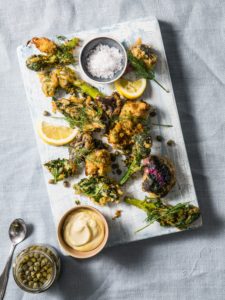
Consider Your Clientele
Your clientele also matters when you are deliberating on which pricing strategies to employ. Just as in any other business, creating a detailed profile of your ideal customer is crucial. This representation encapsulates vital information about the customer, such as their dressing style, workplace, estimated income, culinary tastes, family background, reasons for visiting your restaurant, preferred timings, company, service inclinations, and more. It’s essential to be thorough, even giving this profile a name and speculating on the type of school they might have attended.
Get detailed here. The more complex the picture you can draw of your avatar, the better your ability to fine-tune your restaurant’s products and services to cater to that avatar. You will know how to structure your marketing strategy to appeal to them most. You will also learn how to price your menu based on the avatar you have drawn up.
Fast Food Example
If you’re running a fast food restaurant, you know your typical customer probably prefers a quick-to-prepare and cheap meal. People who go to fast food restaurants are looking for an affordable place to eat without spending much money. That means you can have different prices than a fancy restaurant.
If you’re running a restaurant specialising in gourmet food with top-of-the-range wines, ambience, and services, then you are probably targeting a more well-to-do clientele. These people come to your restaurant already expecting the prices to be high. Setting low prices in such an establishment can make them suspicious of the quality of your food and drinks. This will hurt your brand and, ultimately, your bottom line.
Triple Pricing Strategies
This is another pricing strategy among restaurants and many other types of businesses. It is commonly known as the “good, better, best” pricing strategy and works much like you would guess it does from the name. A ‘good’ item on the menu is typically the cheapest. There is also a mid-priced item, the ‘better’ item. The most expensive item is the ‘best’ item. In the case of a fast food joint, the excellent item might be no more than a hamburger, or better, a hamburger, fries, and a salad, while the best option would be all three plus a large soda and dessert.
How to Capitalise on Triple Pricing
It’s often the case that the mid-priced option sells the most while the others sell less, so it is a good idea to make the profit margin on the mid-priced option the greatest to capitalise on that.
Even though the mid-priced option is usually the bestseller, the expensive option is still a good idea. It allows the restaurant to capitalise on those who have money to spend on something more. As a restaurant owner, you want to take advantage of that option because customers will always favour the best option.
Likewise, it’s a good idea to have the cheapest option available to cater to the customer who would like to spend money but less than would be required to buy the mid-priced option or a more expensive one. Typically, these customers want to buy a quick bite on their way, or younger customers want a simple lunch. The cheapest option also works as a prop: it makes the other options look attractive. It builds the case for the others.
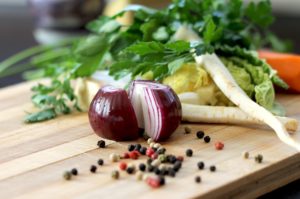
Restaurant Food Cost Formula: Pricing Your Menu To Turn A Profit
A restaurant’s food costs are a huge determiner of its menu prices. Finding the proper equilibrium between the two can help you set prices that cover your overhead and ensure that your restaurant is financially healthy.
Menu price vs menu cost
Menu costs are incurred by a business when they change their prices. However big or small those costs may be.
For example, if you’re changing your menu prices based on rising food costs, you’ll have to reprint menus. This is a direct cost of price changes. An indirect menu cost may be decreased sales from customers unwilling to pay higher prices.
When revising your menu prices, always consider your reasons for doing so and whether it makes financial sense to undergo the menu costs that come with it.
How to calculate the Food cost formula
The food cost formula boils down to calculating the costs of buying, making, and selling your menu items. You can do a few different calculations to paint a clear picture. We’ll go through a few here.
Determine the cost per serving of your dishes.
Before determining the price of your restaurant’s meals, you must know their worth. Specifically, you need to figure out how much your restaurant costs to make one serving of each item on your menu.
The formula to calculate the cost per serving is derived from the food costs. Let’s walk through an example:
Jackie, the proprietor of Jackie’s Burger Bar, aims to determine the cost per serving for his famous Jackie Burger. The dish consists of 8 ounces of pure ground beef, a sesame seed bun, a tablespoon of sauce, two cheese slices, two tomatoes, and two potatoes.
Jackie buys his ingredients in bulk and pays £19 for 5 pounds of ground beef. He calculates that 8 ounces of ground beef for a single burger costs his restaurant £1.90. Jackie does similar calculations to determine the cost per serving of the remaining ingredients in the burger.
- 8 ounces of ground beef: £1.90
- 1 sesame seed bun:£0.25
- 1 tbsp. Sauce:£0.10
- 2 slices of cheese:£0.90
- 2 slices of tomatoes:£0.50
- Two potatoes (for fries):£0.75
Cost per serving gives you the minimum that your menu items should be sold at to break even. The same can applied to coffee or cocktails.
Choose Your Food Cost Percentage
Food cost percentage is a formula that determines the ratio of restaurant food costs to revenue. The figure helps restaurants determine how much to mark up their food cost per serving to set menu prices that cover overhead like rent, labour, utilities, advertising, and more.
While some restauranteurs don’t take food cost percentage seriously, you shouldn’t be one of them. Optimising your food cost percentages can help you maximise each of your menu item’s profits.
What should your restaurant’s food cost percentage be?
To run a financially healthy business, most restaurants keep their food costs between 28% and 35% of a dish’s menu price.
This range includes various restaurant venues, from fast food to fine dining. Only you can determine your ideal food cost percentage by keeping track of your finances and seeing how customers respond to prices.
Calculate your current food cost percentage.
- List all the inventory you received at the beginning of the week.
- Find the dollar value of each item on that list.
- Track the inventory purchases you made within the week that weren’t counted in your original list.
- Repeat the same process at the beginning of the following week.
- Add up your total food sales per shift using your ePOS sales reports.
Next, calculate your actual food cost for the week. Here’s how:
Let’s see how Jackie’s Burger Bar would calculate their food cost percentage:
Starting inventory value = £11,000
Purchases = £7,000
Ending inventory = £15,000
Food sales = £8,000
Food cost percentage = (11,000 + 7,000 – 15,000) / 8,000
Food cost percentage = 3,000 / 8,000
Food cost percentage = 0.375, or 37.5%
Calculate your ideal food cost percentage.
Now that Jackie’s Burger Bar knows that their current food cost percentage is 37.5%, it’s time to compare its actual food cost percentage to its ideal one.
Their total costs were £2,500 and, as we see above, their total food sales are £8,000.
Ideal Food Cost = £2,500 / £8,000
Ideal Food Cost = 0.31, or 31%
As you can see from the Jackie’s Burger Bar example, their current food cost is 37.5%, but their ideal food cost is 31%. That’s why it’s essential to calculate food cost percentages. If Jackie does not reduce the actual food cost to nearer the ideal one, Jackie stands to lose money on the restaurant’s food cost profitability.
If you do, you could take advantage of an opportunity to maximise your profits. With this information, you can re-engineer your restaurant menu and ensure each dish is as profitable as possible.
Suppose you don’t have historical pricing data or have yet to open your restaurant. In that case, we recommend setting your prices using the middle of the industry benchmark range — between 25% and 35% — and then comparing your current vs ideal food cost percentage once you have enough sales data (say, after your first month).
Related article:
Restaurant Menu Pricing Strategies
How To Control Food Costs In Restaurants
Restaurant Food Waste Management Challenge That Will Change Your Restaurant
Shocking Restaurant Secrets The Jaw-Dropping Truth About Operating Costs
What Is The Most Important Thing Restaurant Managers Should Consider When Choosing A Food Vendor
Price Your Menu Items Accordingly.
From our example, Jackie Burger costs Jackie’s Burger Bar £4.40 per serving. So, how much should Jackie’s Burger Bar charge for this dish to cover overhead expenses and possibly make a profit? To determine that, we’ll use this food cost formula:
We know that the cost to the restaurant for one serving of the Jackie Burger is £4.40. We decided we wanted a food cost percentage of 31% because that’s what their ideal price was. Now we apply those figures to the food cost formula:
Menu item price = £4.40 / 31% = £14.20
Based on the ideal food cost percentage of 31%, Jackie’s Burger Bar should price the Jackie’s Burgers at £14.20.
Calculate your current food cost percentage vs. your ideal food cost percentage for each dish on your menu to ensure your establishment maximises its revenue per dish.
Track Your Price Change’s Effect On Sales.
You can set menu prices once and be done with it forever. However, if you want a successful restaurant, you must track the effects of pricing on your sales to determine whether or not you need to adjust prices.
Let’s revisit Jackie’s Burger Bar one last time. After using our pricing formula, Jackie determined that she needed to raise the price of the Jackie Burger from its original price of £12 to £14.20. How did the new price affect sales?
Here are two scenarios that illustrate what could have happened:
Scenario 1: Burger sales slow down
In this scenario, Jackie Burger’s sales have decreased since the price increased.
This may suggest a need to decrease the price for customers. If Jackie aims to boost sales by lowering the dish’s price, he should strategically align it with industry benchmarks for food cost percentage. For instance, employing a food cost percentage of 35% (at the upper limit of the range), the menu cost for his burger would be £12.57. This price would be reasonable for guests and sufficient to cover his overhead expenses.
Scenario 2: Burgers sell like crazy!
Conversely, if Jackie Burger is selling well at the new price, it could mean that customers can afford another price bump.
To increase the price without outpricing customers, Jackie could use a food cost percentage of 28%, which would price Jackie Burger at £15.70.
In both scenarios, it’s essential to see how customers react to changes in price. Find the sweet spot in pricing, where dishes are profitable for your restaurant and popular with customers.
Price menu items for delivery
Delivery has taken on new importance for restaurants in recent years. One of the big reasons why some restaurants are unsuccessful with delivery is that they need to plan out their menus properly. From featured dishes to pricing, delivery menus need tweaks to ensure that customers are satisfied with their orders—and that you’re turning a profit.
Sync your menu to major delivery apps with Lightspeed Delivery.
Get orders sent straight to your ePOS and offer a delivery service without overwhelming your workflow.
Adjust menu item prices.
With each delivery service charging different rates for delivery and service fees, the cost for restaurants to sell through them is naturally higher than for serving sit-down guests. The total meal cost (TMC) of a meal bought through a delivery app can get up to 40% higher than its restaurant list price (RLP).
Customers are willing to pay a premium for the convenience of delivery. With the added costs associated with selling through delivery services, restaurants likely need to increase their menu prices to assure profitability on each sale.
When pricing your delivery menu, take the following into consideration and work with your delivery service provider to adjust your menu prices accordingly:
- Cost of Goods Sold(COGS): The total cost of everything used to make menu items, down to the condiments and packaging.
- Service and delivery fees: The fee charged by the delivery aggregator for providing their service
- Gross profit: The difference in value between the selling price of a dish and the cost of the ingredients and materials used to make the dish.
- Net profit: The amount leftover from the gross profit after you deduct operating expenses like payroll, rent, utility bills, ingredients, and equipment leasing costs.
Certain delivery services have restrictions on how restaurants price items on their platform. Inquire how each delivery service provider you’re interested in handles menu pricing and works within their guidelines.
Select delivery-friendly items
First, you must decide which menu items are delivery-friendly and travel well.
Equally important is deciding what kind of packaging to use to preserve food quality from when it’s finished being prepared to when a customer is ready to eat.
Would a delivery-only model be suitable for you? Read how to start a ghost kitchen in 7 steps.
3 Ways To Lower Restaurant Food Costs
If increasing menu prices results in fewer people eating at your restaurant, you can decrease your food cost percentage by reducing your cost per serving. You can do this by:
- Find cheaper vendors: Can you get the same quality ingredients for a lower price with another vendor?
- Reducing portion sizes: In Jackie’s case, he could serve a 6-ounce burger rather than an 8-ounce burger to reduce portion sizes and his food cost per serving.
- Use cheaper ingredients: While it can lower your food cost percentage, this is usually a last resort. Customers will notice if your food quality suffers, and you risk losing their business.
Best Restaurant Inventory Management System To Skyrocket Your Profits
Setting Menu Prices And Handling The Expenses Of Restaurant Food
Keeping food costs down and pricing menu items properly can make or break a restaurant, and that’s why it’s important to compare your existing food cost percentage to your ideal food cost percentage and change your prices accordingly.
Jackie’s Burger Bar kept their burger prices at £14.40, up from their original price of £11.75. At the same time, it might not seem like a lot at first, but that extra £2.65 per burger adds up quickly. If Jackie’s Burger Bar sells 75 burgers daily, that £2.65 becomes over £72,000 in additional revenue annually. Now, imagine if Jackie optimised the food cost percentages for each menu item.
It might seem like a hassle, but carefully controlling your restaurant’s food cost percentages assures that you’re managing the profitability of your restaurant.
To recap, here’s how to price menu items at your restaurant for financial success:
- Determine the cost per serving for all the dishes on your restaurant’s menu.
- Calculate your current food cost percentage.
- Determine your ideal food cost percentage.
- Price menu items accordingly.
- Adjust menu item prices and food costs based on how customers react to the price changes.
Now that you’re a restaurant food cost guru, it’s time to revisit your menu item costs and give it a revamp.
FAQs
- How often should a restaurant revisit its pricing strategy?
Regular review, at least bi-annually, is recommended to adapt to market changes and evolving customer preferences.
- Is value-based pricing more suitable for upscale restaurants?
Not necessarily. It’s about aligning perceived value with the customer’s willingness to pay, applicable across various segments.
- Can dynamic pricing lead to customer dissatisfaction?
When implemented judiciously, dynamic pricing can accommodate fluctuations without alienating customers.
- What role does menu engineering play in pricing strategies?
It shapes the menu layout and item positioning to influence customer choices and optimise profitability.
- How important is it to consider seasonal demands in pricing?
Adapting to seasonal demands is crucial for maximising revenue and maintaining customer interest.
Conclusion
Pricing in the restaurant industry is an intricate dance, blending cost, market demand, and customer perception. By leveraging diverse pricing strategies, restaurants can sculpt a profitable business model that resonates with patrons and ensures enduring success.

